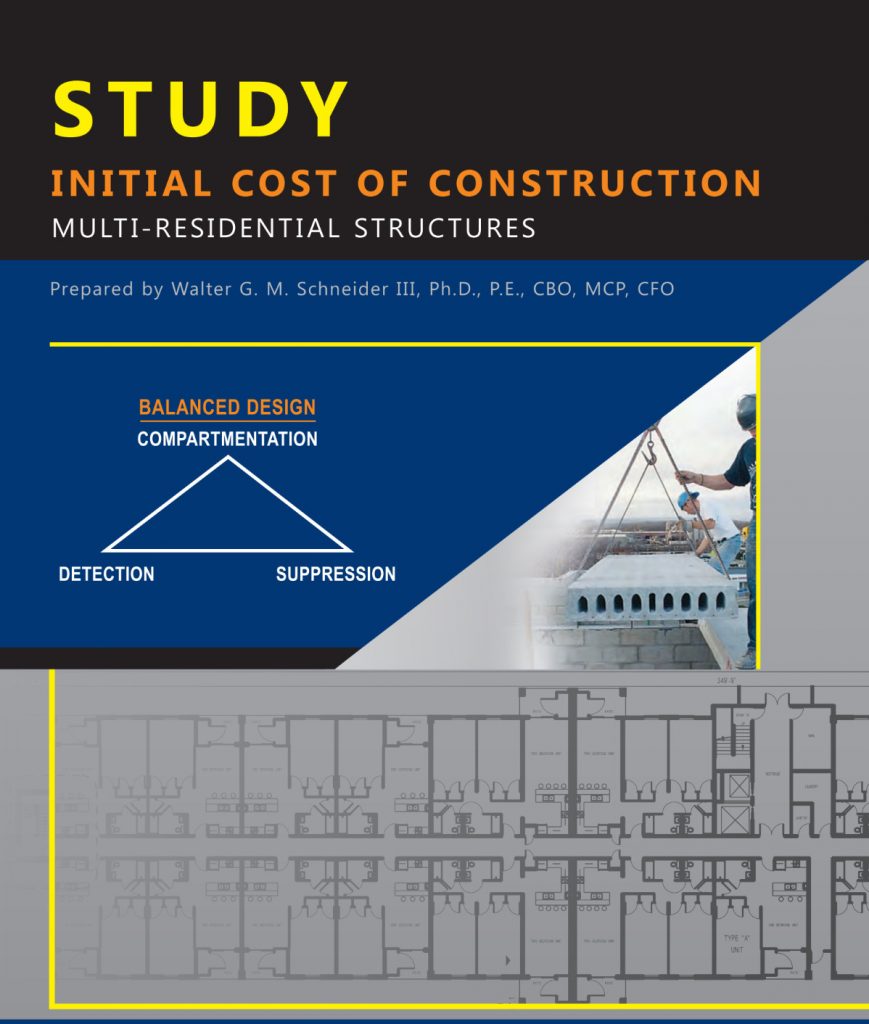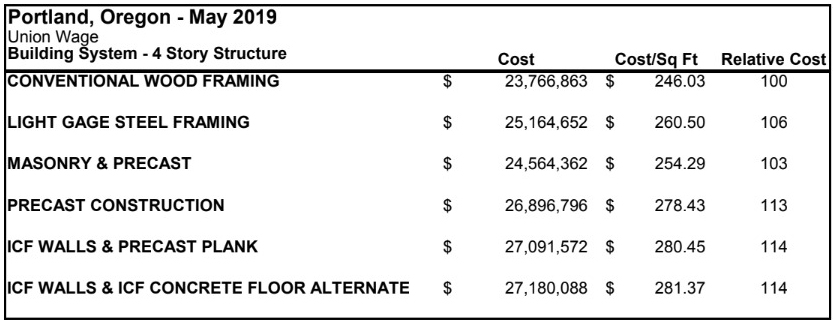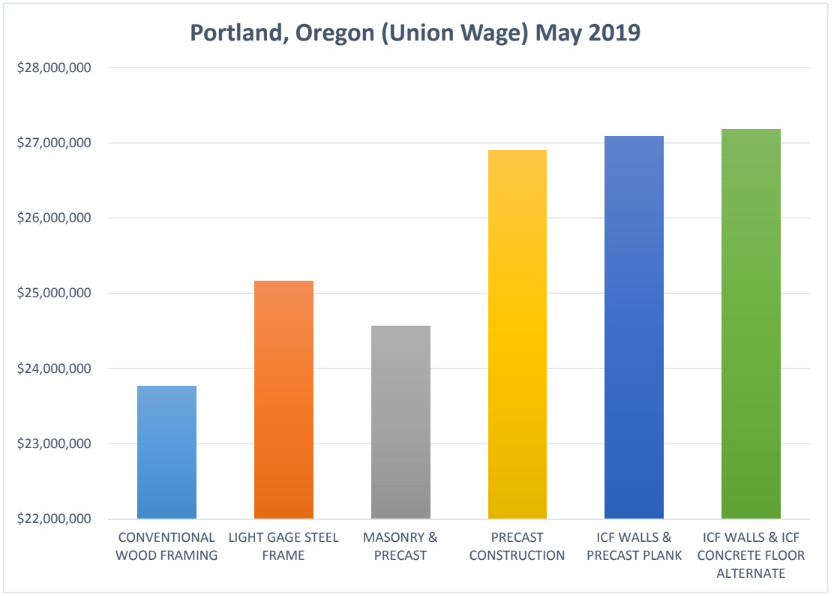
Initial Cost of Construction
Posted by admin on September 24, 2019

Introduction
For the Portland, Oregon cost comparison it was decided to use union wages based on the local construction climate. The reader is referred to the Initial Cost of Construction Study, Multi-Residential Structures, October 2017 original report for a complete discussion on study design and methodology. (See www.buildingstudies.org.)
Study Results and Discussion
The results of the construction cost study are presented in the following table. The relative cost presented is a percentage of the conventional wood frame system.
Portland, Oregon – Four story structure representing apartment/condominium buildings, student housing, elderly housing, and other multi-family buildings.

The least expensive system, but with the least fire resistance, is the conventional wood frame system. The noncombustible load-bearing masonry wall system with precast concrete plank floors compares very favorably with conventional wood frame with an increased cost of only 3 percent. Additionally, the cost of the load-bearing masonry system is 3 percent lower than the light gage steel frame system.

Study Conclusions and Recommendations
Based on the construction cost estimates prepared for this study (see graph above), the cost associated with using a noncombustible compartmentalized construction method including concrete-based construction materials was very favorable with both conventional wood frame and light gage steel frame construction costs. The load-bearing masonry system was only 3 percent more than the cost of conventional wood frame and 3 percent less than steel frame construction. All the concrete-based construction systems were within a 14 percent increase over the conventional wood frame construction system. In many cases this amount can be partially offset by the contingency budget typically recommended for the owner to carry for unanticipated expenditures during the project or perhaps from fire insurance premium reductions.
The minimal increase in construction cost can help pay for itself over the life of the structure. Materials such as concrete masonry have many other advantages beyond their inherent fire resistance including durability, resistance to mold growth, resistance to damage from vandalism, structural integrity, and minimal damage caused by water and water pressure in the event of building fire. In many cases, with concrete-based construction that will never burn, the damage outside of the fire compartment is minimal. This provides for reduced cleanup costs and quicker reoccupation of the structure.
This study determined that truly resilient buildings can be constructed affordably. We can keep the residents in our communities safe by using the principles of balanced design. We recommend that a similar study be undertaken to evaluate the use of similar construction systems and their associated construction cost impact on other typical building types such as schools, retail establishments, and commercial buildings.


